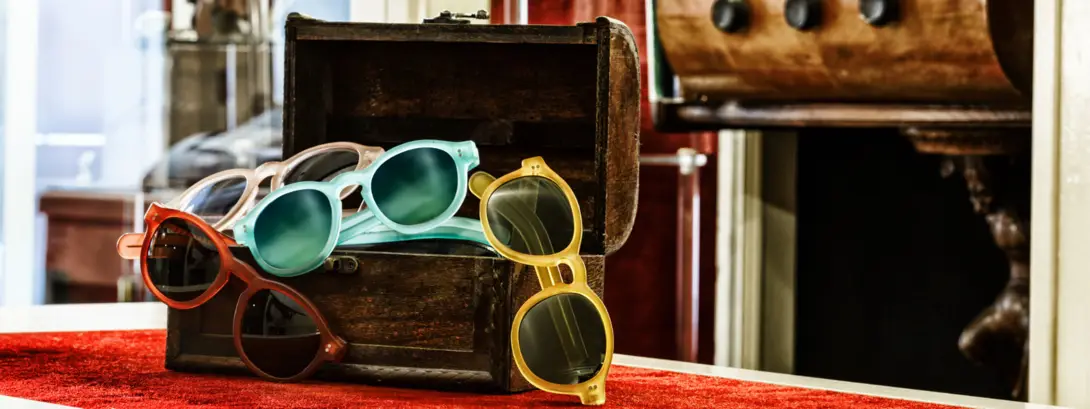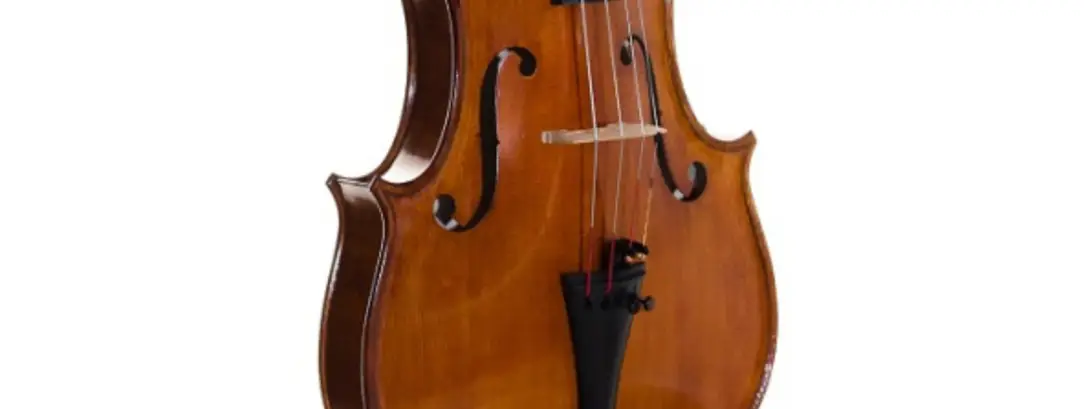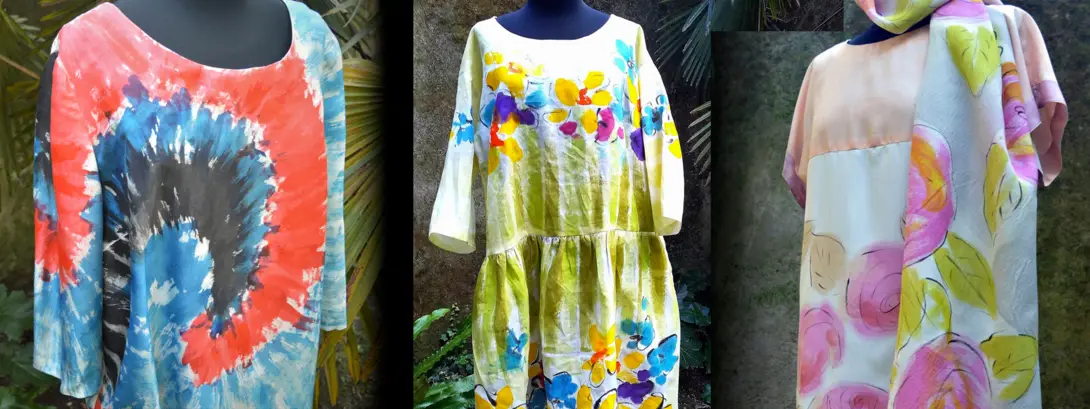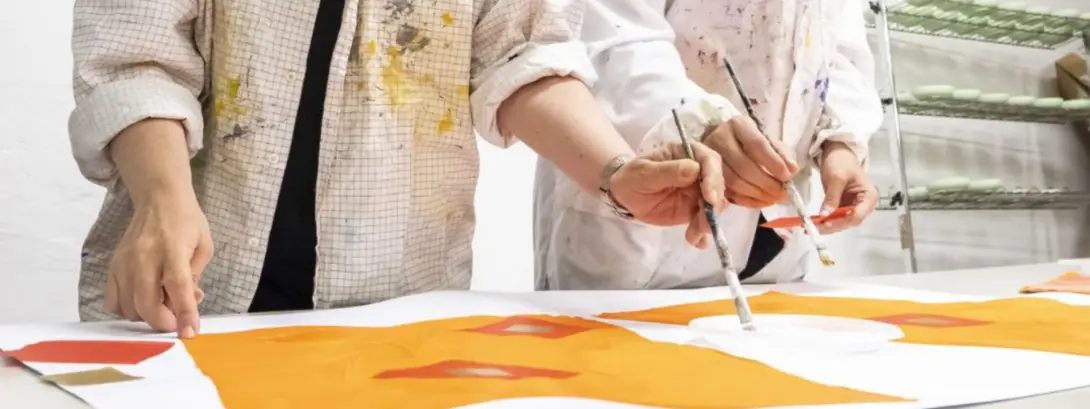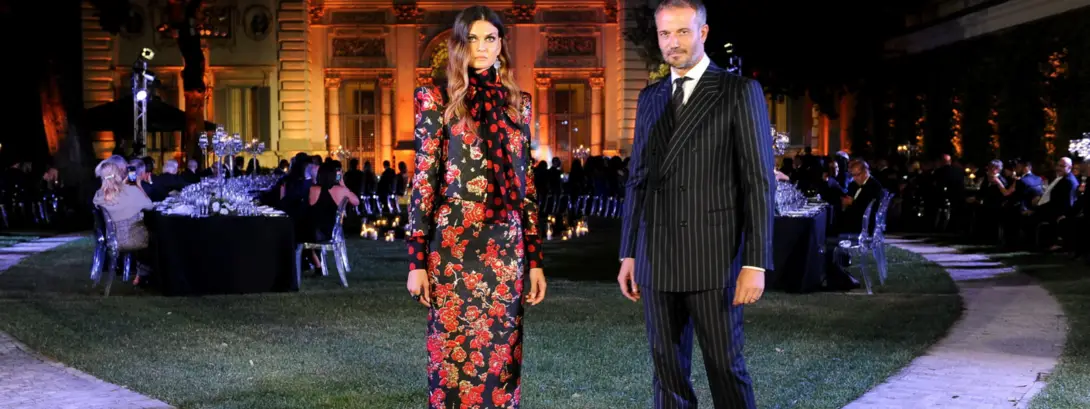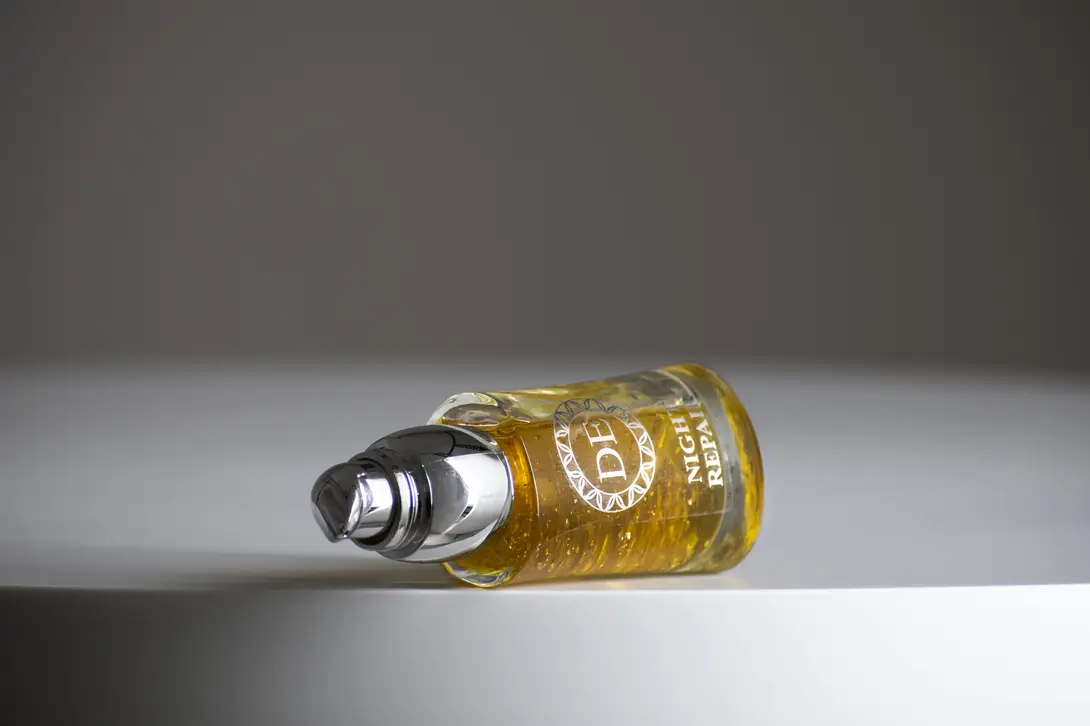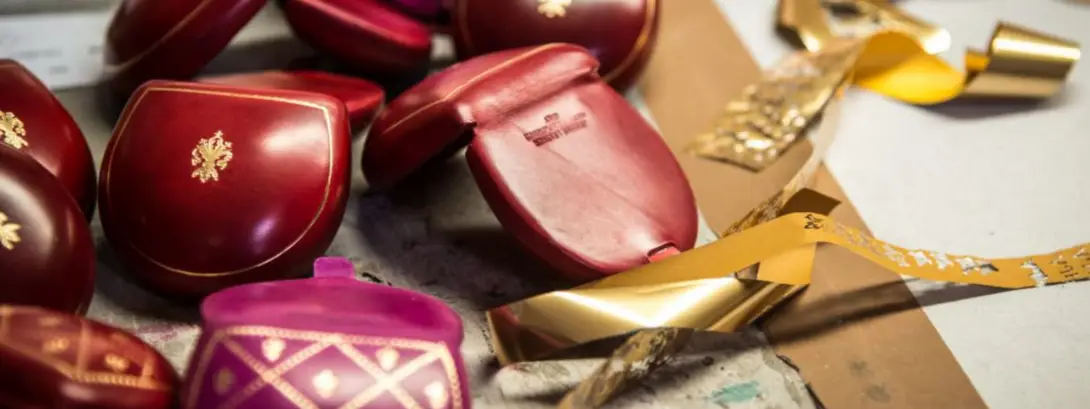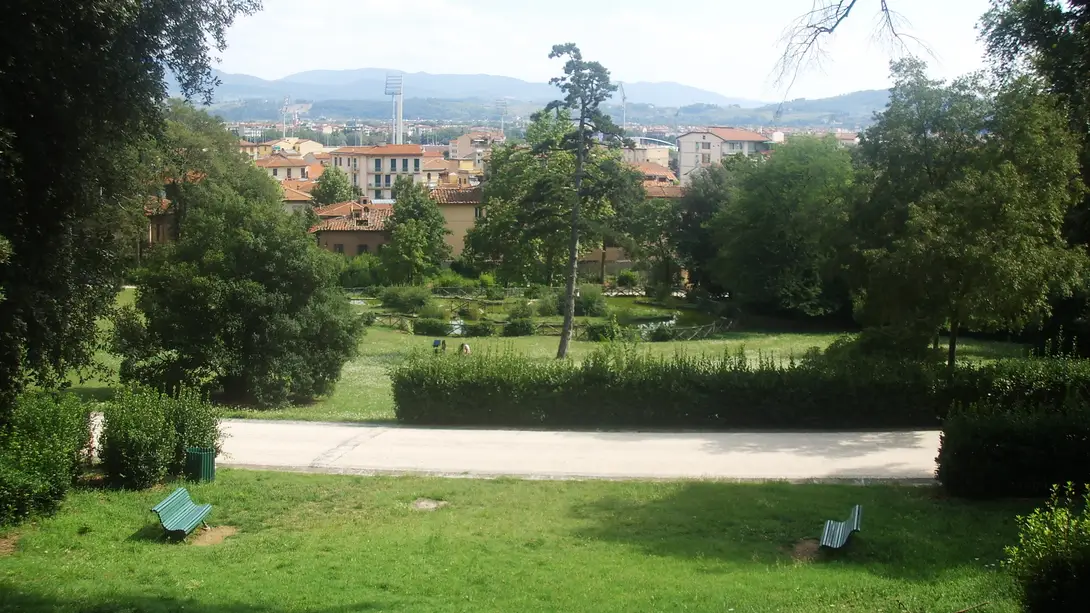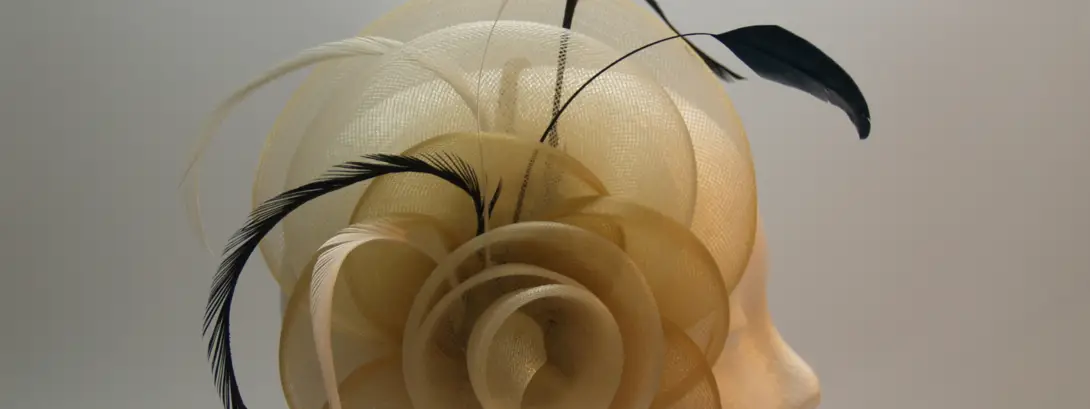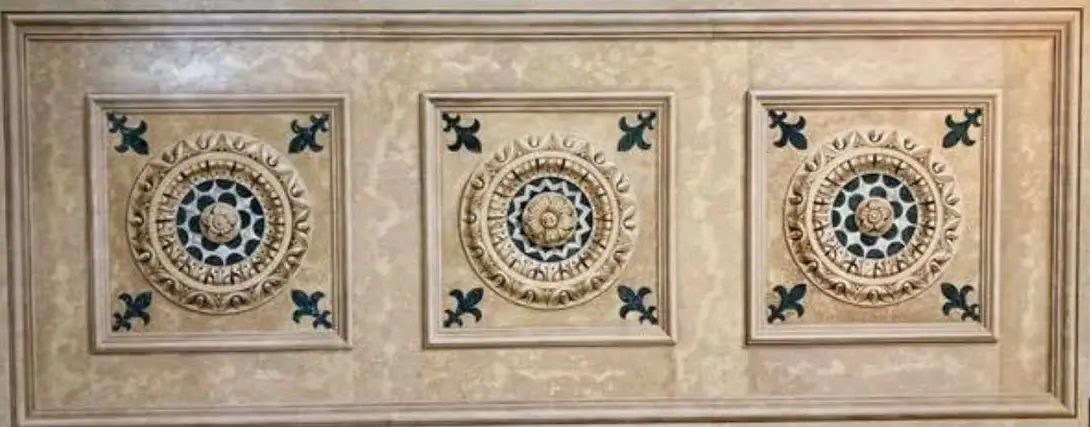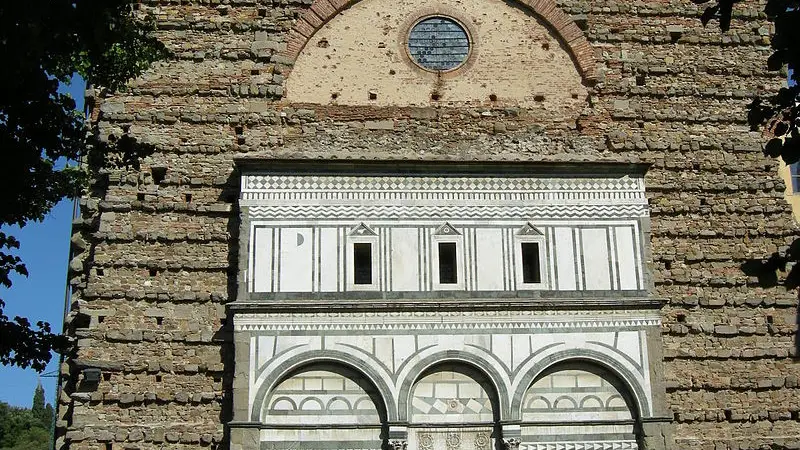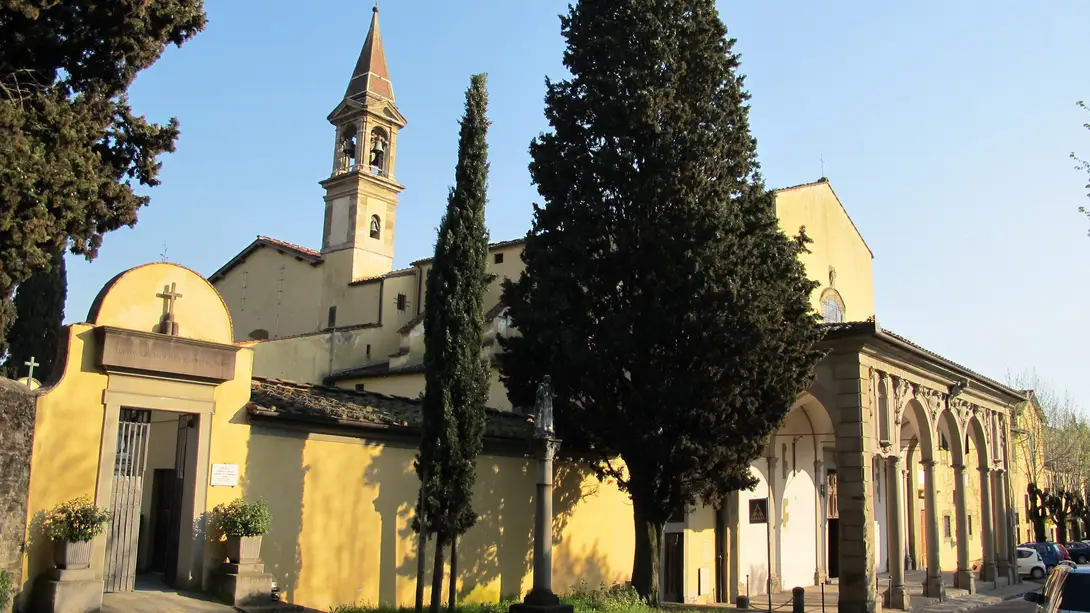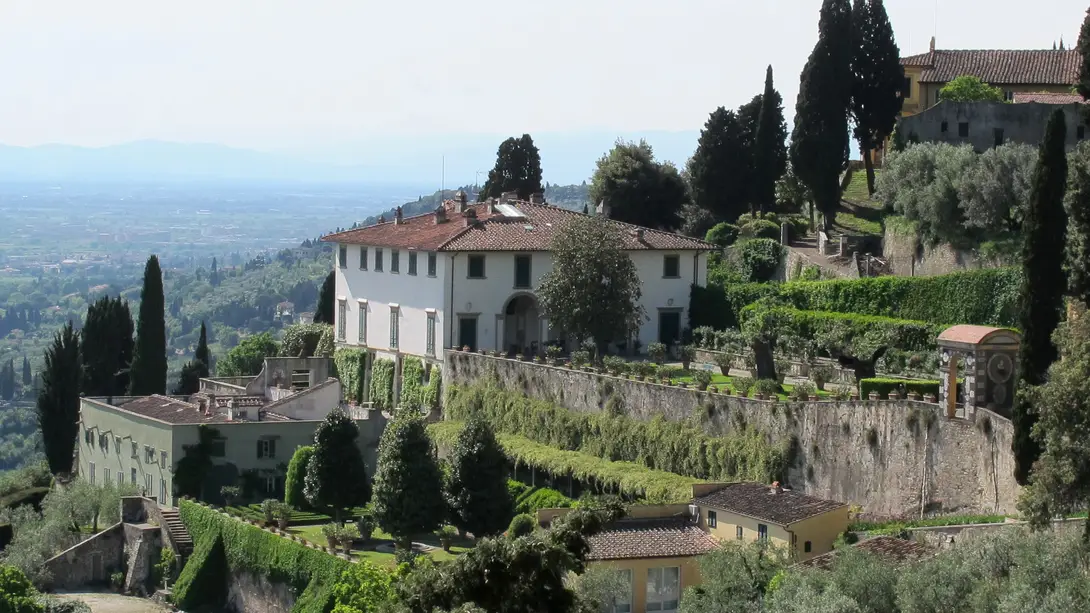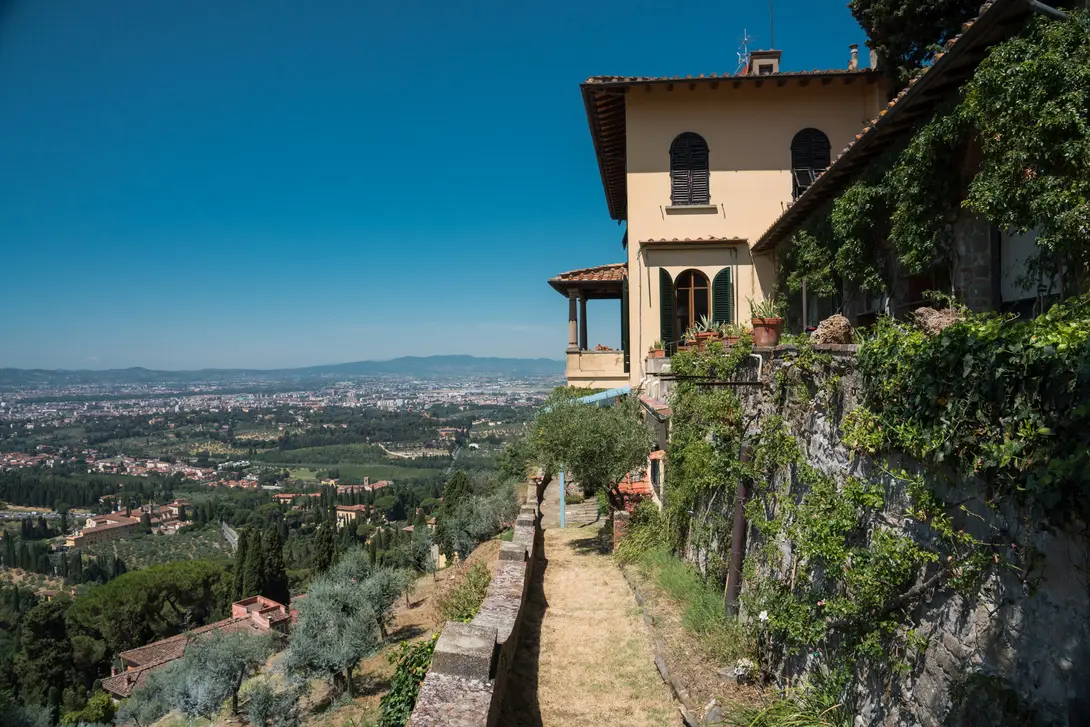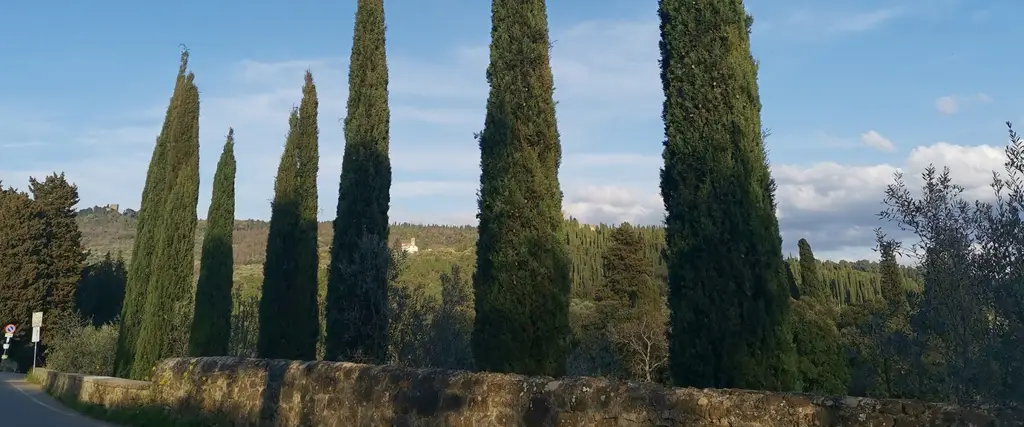
Le Cure
In ancient times, along the Mugnone torrent, the curandaie were dedicated to the 'cure' of linen and hemp cloth, which consisted of washing and bleaching them.
In the district, located outside the city walls, precisely because of the presence of the stream, which provided the indispensable amount of water, various activities sprang up for the processing of ropes and fabrics. The prevalent activity practised gave its name to the district, called Le Cure.
Later, the area became home to various craftsmen's workshops that had an important economic value for the city, such as the Fonderia delle Cure, the Mulino Biondi, the first Galileo, the Società Anonima Les Tramways Florentins, the Romer dye works and the Salani printing works.
The Cure became a residential district following the expansion of the city with the redevelopment of Firenze Capitale, designed and executed by Giuseppe Poggi starting in 1864.
In 1896, the construction of the Campo di Marte railway and the railway line ideally separated the city from the district.
It is worth mentioning the public transport system that Florence devised and expanded from 1873. The horse-drawn carriage service, run by the Impresa Generale degli Omnibus, was replaced over the years by the tramway lines, managed by the Società Anonima Les Tramways Florentins. In the early 1880s, the Florentine tramways expanded to the neighbouring territories of Sesto Fiorentino, Castello, Prato, Rovezzano, Bagno a Ripoli, Settignano, Fiesole and Chianti. In 1895, the steam tramway covered a route of 92.782 km, while the animal-powered tramway covered 27.895 km.
Today, the railway subway system in Piazza delle Cure has become a 'palette' for the many street artists who decorate the walls with their creations.
A not secondary aspect characterises and connotes the Le Cure district, the close relationship with the surrounding nature. Le Cure rises on the slopes of the hills that surround Fiesole, places of infinite peace and beauty that inspired artists such as Telemaco Signorini, Silvestro Lega and Odoardo Borrani.
Nature and the architectural works that stand here - villas, gardens, monasteries, convents, abbeys and churches - coexist harmoniously, instilling in visitors a sense of measure and balance.
This itinerary is part of the European project Crafts Code.
Comune di Firenze
Les lieux
Étapes
Antica occhialeria
In 1956, Lucio Enrico Di Nardo, a connoisseur and lover of art objects, started his business as an optician and collector of vintage spectacles. On the strength of their long experience, his descendants transformed the business into an authentic artisan eyewear workshop, where past and present intertwine, resulting in glasses entirely finished by hand.
The design and production of glasses according to customer drawings are entirely customised.
HISTORY:
The ancient Occhialeria di Firenze began its activity in 1981 in the old Via San Gallo, in a former millinery of the late 19th century. The antique furnishings were spared and adapted to a new use, dealing mainly with modern and antique optics. Thanks to the professionalism of the founders - opticians since 1956 - and the hard work of its employees, the Antica Occhialeria has slowly developed over the years. Since 2009, the old premises have been flanked by two new commercial areas, where both the traditional optician's business and the wholesale of branded glasses have found their place. In the old premises, in an atmosphere of yesteryear, the sale of original vintage spectacles or spectacles that reproduce the shapes and styles of past models continues. Finally, for all the antique glasses on sale, the company is able to reproduce lenses, both prescription and sunglasses, with the same geometric typology as last century. Needless to say, this last activity is mainly aimed at particularly discerning collectors and vintage enthusiasts. The company and the shop, although located in the boulevard belt, are somewhat remote from the centre and the tourist routes; however, this circumstance has not deterred those buyers who wish to purchase an absolutely unusual product.
Tommaso Pedani
A music enthusiast from an early age, Tommaso Pedani dedicated himself to the study of contemporary composition. At the Scuola di Liuteria - Bottega di Parma, under the guidance of maestro Desiderio Quercetani he learnt the techniques and skills of traditional Italian violin-making, making two violins, a cello and a viola.
Since 2015, he has set up his business in Florence. In addition to repairing and restoring stringed instruments, he continues to further his education, study and practice of the craft.
Aure di Lucia Liddo
Aure was born from a passion for fabrics and colours. Two collections a year of garments are produced, of which hand-painted garments such as Artwear are unique and special.
They are presented with fashion shows in the Atelier's garden and then made to order and customised. The creation is tailor-made, the fabrics are of high quality and the colours are non-toxic and wash-resistant.
Made in Sipario
Made in Sipario is a social cooperative whose artisans are 'Special Artists': young adults with mental disabilities who have been training for years in paper, wood, ceramic and fabric decoration.
The cooperative's mission is precisely to train and integrate these young people into work so that they can develop their skills and integrate into society.
Ombretta Maffei
Ombretta Maffei has been making made-to-measure, formal wear of the highest quality for women in her tailor's shop since 1978. She is constantly researching new and customised working techniques.
She creates unique dresses for her clients that are entirely handmade, according to the tailoring tradition, using only high quality natural fabrics. A professional and artisan path that she now shares with her daughter Beatrice.
Divina essentia
When luxury becomes natural, organic and safe. Divina Essentia specialises in aromatherapy cosmetics and natural dermocosmetics. All products are bottled one by one at the laboratory at the foot of the mountains, specialising in natural and organic cosmetics.
The formulations of Dr Barbara Burroni, a biologist and expert in natural medicine, contain only raw materials of the highest quality.
Peroni Firenze
Since 1956, we have been producing and decorating 100% handmade Florentine artistic leather creations in Florence, using vegetable-tanned leather from Tuscany, dyed and processed according to the ancient Florentine tradition.
Park of Villa Il Ventaglio
The park was originally conceived for the private villa built by the architect Giuseppe Poggi for the Archinto family between 1839 and 1853, and included a small Romantic lake with a tiny island and bridge. The large avenue, wide enough to take carriages, was a forerunner of solutions later adopted by Poggi for the Viale dei Colli.
Mode Liana
The history of Mode Liana began in Florence in 1972 when the parents, Rolando and Liana, decided to take over the company where Rolando had worked for more than twenty-five years, Il Fiore Artigiano.
Today the family produces millinery hats and many other accessories for brides and grooms, ceremonial and elegant wear, cinema and theatre, all handmade by professional milliners and made in Florence.
Bacati Stefano
Stefano Bacati is a restorer and in his handicraft workshop he creates furnishing objects and decorations of various kinds, according to the styles that most characterised the Florentine Renaissance and Tuscan art.
Badia Fiesolana
This church was the former cathedral of Fiesole, it was restored thanks to Cosimo de' Medici and here worked first Brunelleschi and then Michelozzo.
The Romanesque façade with white and green marble inlays recalls the Baptistery in Florence and San Miniato al Monte Church.
Today the premises of the convent is the European University Institute's hub.
Church and convent of San Domenico
The convent was built between 1406 and 1435 and here studied two important Dominican monks such as Antonino Pierozzi and Giovanni da Fiesole, also called Beato Angelico, the famous Renaissance friar-painter.
The convent and the church still have some works by Beato Angelico: the triptych, named Pala di San Domenico a Fiesole (in the church, left nave), the Blessing Virgin and the Crucifix (in some not visible areas of the convent). The front porch and the belltower of the church were done by Antonio Nigetti (XVII century).
Villa Medici in Fiesole
Villa Medici in Fiesole, dates back to the period between 1451 and 1457, built for Giovanni, son of Cosimo Il Vecchio. The project was formerly attributed to Leon Battista Alberti, flanked by Bernardo Rossellino and Antonio Manetti.
In a splendid position over the city, this villa is the first example of a country residence that does not take the form of a fortress or castle, but rather inaugurates the idea of Renaissance villas style.
Moreover, it was here that the cultivation of citrus fruits, coming from the south, began; citrus plants are a characteristic of all Medici gardens
Michelucci Foundation
Giovanni Michelucci, a great protagonist of 20th century Italian culture, was one of the greatest Italian architects of the 20th century. In the Foundation's headquarters, Villa Il Roseto which is the house where he lived the last years of his life, the archive, the architect's memoirs, drawings, models and library collections can be consulted. Furniture designed by him and paintings by his wife Eloisa Pacini can be admired, along with many works of art by architect and artist friends.
The spot is breathtaking for the view on the city of Florence and it is is surrounded by a fully terraced garden full of hydrangeas, roses, azaleas and adorned with trees: olive, cypress, orange, pomegranate, cherry and typical Mediterranean plants.
The villa is the headquarters of the Michelucci Foundation, but on several occasions it can be visited.
